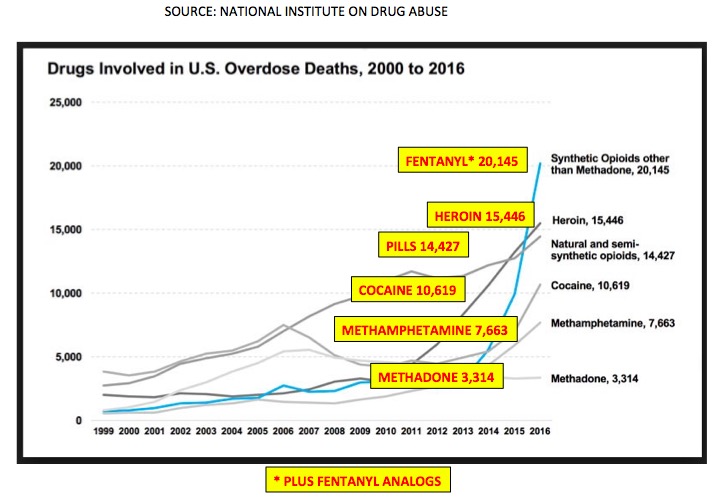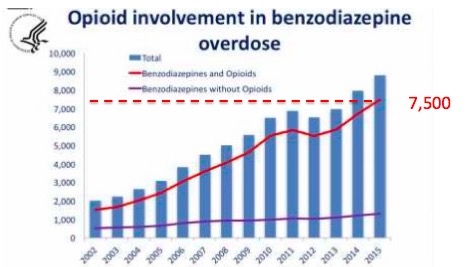Dear New York Times Editors,
You recently asked readers to fill out a questionnaire, presumably so that you would be aware what we think of your coverage of what we at the American Council loosely called a "fentanyl crisis." I offer my two cents, however, I will not be checking boxes or answering canned questions. Instead, if you really want to know the problem with your coverage, just keep reading. You won't have to read much. Exactly one sentence.
October 26, 2017:
"Overdoses, fueled by opioids, are the leading cause of death for Americans under 50 years old — killing roughly 64,000 people last year, more than guns or car accidents, and doing so at a pace faster than the H.I.V. epidemic did at its peak." (1)
This one sentence is misleading, manipulative, and also illogical. It gives the false impression that pills, such as Vicodin and Percocet are the major drivers of overdose deaths in the US. This is demonstrably wrong. The 64,000 number reflects overdoses for all drugs of all types, both legal and otherwise. Even a cursory look at data from the National Institute on Drug Abuse tells us a very different story. Of the six primary categories that comprised 71,614 overdose deaths (2) in 2016, pills were responsible for only 20% of fatalities - a very different story than what your article implied.

SOURCE: NATIONAL INSTITUTE ON DRUG ABUSE
And that number itself is inflated. A 2017 paper in the Journal of Addiction Medicine and Therapy estimated that more than 30% of opioid deaths also involved the use of benzodiazepines. So, assuming that these numbers held steady for 2016, the number of deaths from pills alone is at most 10,000 (14% of all overdose fatalities) - a far cry from what you insinuated in your October 26th article. Now, the first sentence of your article is entirely incorrect. Opioid pills alone do not kill more people than died in car accidents, by guns or by HIV.
And it is entirely possible that the real numbers are lower still. According to the NIH, benzodiazepines played a more significant role in overdose deaths. In 2015, about 7,500 people who died from opioid overdoses had also taken benzodiazepines, a particularly dangerous combination. If these data are correct it would mean that 6,927 people - less than 10% of all overdoses - died from opioid pills alone.

Source: National Institute on Drug Abuse. (NIH)
But let's not forget cocaine. Cocaine and opioids are often used together, which can be seen from another NIH graph from 2015. Forty-seven hundred people who died from opioid overdose also had taken cocaine. If we subtract this number from 6,297 we are left with leaves 2,227 people who died as a result of opioid pills. Yes, approximately THREE percent of all drug overdose deaths are a result of taking only painkilling pills. The premise of your story could not have been more wrong.
If the Times wants to be credible in its reporting it must report correct statistics and an accurate analysis of what they mean. Otherwise, the paper is simply parroting the same falsehoods that governmental agencies and elected officials have been feeding us for years. Certainly, the Times can do better than that.
You wanted our input. There it is.
NOTE:
(1) The comparison of drug overdose deaths to those from HIV, gun and auto accident deaths is disingenuous and serves only to create hysteria about a problem which is already overblown. What other purposes could that statement have? And even if it's all true, it could be argued that the ratio of drug overdoses to these other forms of death has changed because gun violence, auto accidents, and HIV are now killing fewer people than before.
(2) The total is higher than 64,000 because when multiple drugs are present they are all counted separately.




